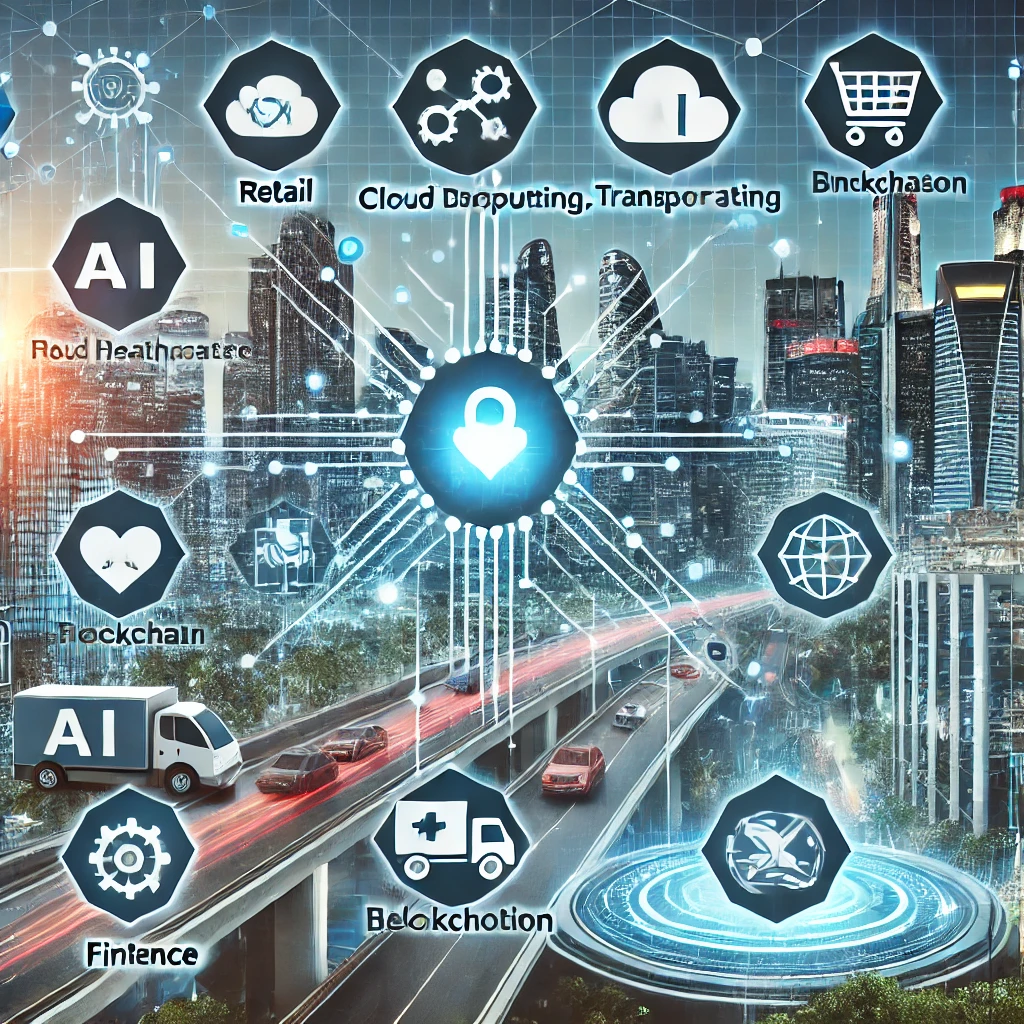In today’s rapidly evolving world, digital innovation is reshaping traditional industries across the globe. From retail to healthcare, transportation to finance, the way businesses operate is undergoing significant transformation. The adoption of cutting-edge technologies such as artificial intelligence (AI), blockchain, the Internet of Things (IoT), and cloud computing has disrupted longstanding business models and introduced new avenues for growth. In this article, we will explore how digital innovation is disrupting traditional industries, with detailed case studies of businesses leading the charge in digital transformation.
The Importance of Digital Innovation in Traditional Industries
Traditional industries often rely on legacy systems and established business models that can limit their agility and ability to compete in the modern market. With the emergence of new technologies, companies must adapt or risk becoming obsolete. Digital innovation allows industries to enhance operational efficiency, improve customer experience, and create new business models. The integration of technology fosters better decision-making, lowers costs, and enables businesses to scale more effectively.
Case Study 1: Retail Industry – The Transformation of Walmart
Walmart, a retail giant that has been in operation for decades, is a perfect example of how digital innovation can disrupt and modernize a traditional industry. Historically, Walmart operated using traditional brick-and-mortar stores, but the rise of e-commerce and digital retailing challenged its market dominance. Companies like Amazon disrupted the retail industry by offering fast, efficient online shopping experiences. To remain competitive, Walmart embraced digital transformation.
Key Innovations by Walmart:
- E-commerce Expansion: Walmart invested heavily in its online presence, providing customers with the option to shop online and pick up products in-store. The retailer also launched its own marketplace to compete directly with Amazon.
- Mobile Technology: The Walmart app became an essential tool for customers, enabling mobile shopping, mobile payments, and real-time inventory tracking.
- Automation and AI: Walmart introduced automation in its warehouses and utilized AI for supply chain management, inventory prediction, and customer support.
Results: Walmart’s digital transformation has allowed it to maintain its competitive edge in the retail sector, increasing its online sales by over 79% in recent years. Through digital innovation, the company transformed its business model to meet modern consumer demands.
Case Study 2: Healthcare – Telemedicine and the Rise of Digital Health
The healthcare industry is often seen as slow to adopt new technologies, but the COVID-19 pandemic accelerated digital innovation in this sector. Telemedicine, in particular, became a lifeline for patients and healthcare providers alike, allowing for remote consultations and reducing the burden on traditional healthcare infrastructure.
Key Innovations in Healthcare:
- Telemedicine Platforms: Companies like Teladoc and Doctor on Demand disrupted traditional healthcare by offering virtual consultations, making healthcare more accessible for patients who could not visit clinics.
- Wearable Health Devices: Fitbit, Apple, and other companies developed wearable devices that monitor health metrics such as heart rate, sleep patterns, and physical activity, providing valuable real-time data to healthcare providers.
- AI-Powered Diagnostics: AI is being used to assist with diagnostics, from analyzing medical images to detecting diseases early on. IBM’s Watson Health is one such example, using AI to analyze vast amounts of medical data and assist healthcare professionals in making informed decisions.
Results: The adoption of digital health tools has revolutionized the healthcare industry by improving accessibility, reducing costs, and providing personalized care to patients. It is estimated that the global telemedicine market will reach $460 billion by 2030, a direct result of digital innovation.
Case Study 3: Financial Services – The Rise of FinTech
The financial services industry has seen significant disruption due to the emergence of financial technology (FinTech) companies. Traditional banking models, characterized by physical branches and manual processes, have been challenged by the digital-first approach of FinTech startups.
Key Innovations in Financial Services:
- Mobile Payments and Digital Wallets: Companies like PayPal, Square, and Stripe revolutionized the way businesses and consumers handle transactions, enabling seamless, contactless payments through digital wallets and mobile apps.
- Blockchain and Cryptocurrencies: Blockchain technology is transforming banking by enabling secure, decentralized financial transactions. Bitcoin, Ethereum, and other cryptocurrencies have gained significant traction, offering an alternative to traditional banking systems.
- Robo-Advisors and AI: Robo-advisors like Betterment and Wealthfront are using AI and machine learning algorithms to provide personalized investment advice at a fraction of the cost of traditional financial advisors.
Results: Digital innovation in the financial sector has democratized access to financial services, offering consumers more control over their financial decisions. The global FinTech market is expected to reach $305 billion by 2025, further emphasizing the disruption in traditional banking.
Case Study 4: Transportation – Uber and the Ridesharing Revolution
The transportation industry has also undergone significant transformation due to digital innovation. The rise of ridesharing platforms like Uber and Lyft disrupted the traditional taxi industry, creating a new on-demand model for transportation.
Key Innovations in Transportation:
- Ridesharing Platforms: Uber and Lyft pioneered the ridesharing model, leveraging mobile apps, GPS technology, and real-time data to connect riders with drivers. This innovation replaced the need for traditional taxi dispatch services.
- Autonomous Vehicles: Companies like Tesla and Waymo are leading the charge in developing self-driving cars, which could further disrupt the transportation industry by reducing the need for human drivers.
- Electric Vehicles (EVs): Tesla has popularized electric vehicles, pushing traditional car manufacturers to innovate and invest in cleaner, more sustainable transportation options.
Results: Uber’s success has transformed the way people think about transportation, creating a new market for on-demand services. The global ridesharing market is expected to reach $220 billion by 2025, with continued growth driven by digital innovation.
The Impact of Digital Innovation on Other Traditional Industries
The case studies above are just a few examples of how digital innovation is disrupting traditional industries. Other sectors experiencing significant transformation include:
- Manufacturing: The rise of Industry 4.0, which includes IoT, automation, and AI, is reshaping manufacturing processes, making them more efficient and cost-effective.
- Agriculture: Digital tools such as precision farming, drones, and sensors are improving crop yields, reducing waste, and enabling farmers to make data-driven decisions.
- Education: E-learning platforms like Coursera and Udemy are revolutionizing education by making it more accessible and affordable. The shift to online learning, accelerated by the pandemic, is transforming how knowledge is delivered.
How Traditional Companies Can Embrace Digital Innovation
Traditional industries must prioritize digital transformation to remain competitive. Here are some strategies for embracing digital innovation:
- Adopt Agile Methodologies: Companies should shift to more flexible, agile approaches that allow for rapid experimentation and iteration.
- Invest in Technology: Investing in cutting-edge technologies such as AI, blockchain, and IoT will enable companies to remain at the forefront of their industries.
- Collaborate with Startups: Traditional businesses can partner with or acquire startups to gain access to innovative solutions and new markets.
- Customer-Centric Approach: Using data analytics, companies can better understand customer needs and personalize products and services.
Conclusion
Digital innovation is not just a trend; it is a fundamental shift that is transforming traditional industries across the globe. Companies that adapt to these changes and embrace new technologies will thrive in the digital age. By learning from the success stories of businesses like Walmart, Uber, and FinTech startups, traditional companies can harness the power of digital innovation to stay competitive and drive growth.


Thanks for your help and for writing this post. It’s been great.